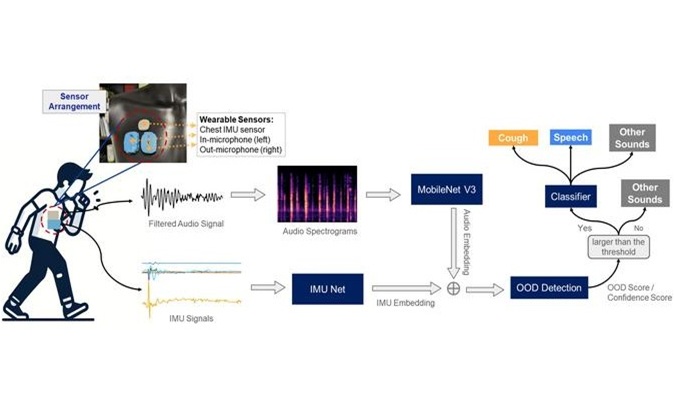Hybrid Esophagectomy Results in Fewer Complications
|
By HospiMedica International staff writers Posted on 22 Jan 2019 |
Hybrid minimally invasive esophagectomy for esophageal cancer results in less intraoperative and postoperative major complications than open surgery, according to a new study.
Researchers at Claude Huriez University Hospital (CHRU; Lille, France), University Hospital of Besançon (France), and other institutions in France conducted a multicenter, randomized, controlled trial of 207 patients (18-75 years of age) with resectable cancer of the middle or lower third of the esophagus. Patients were randomly assigned to undergo transthoracic open esophagectomy or a hybrid minimally invasive esophagectomy, which involved laparoscopic gastric mobilization and open right thoracotomy (the Ivor–Lewis procedure).
The primary end point was intraoperative or postoperative complication of grade II or higher according to the Clavien–Dindo classification within 30 days. In all, 312 serious adverse events were recorded in 110 patients, with 36% of the hybrid-procedure group suffered major intraoperative or postoperative complications, compared to 64% in the open-procedure group. At three years, overall survival was 67% in the hybrid-procedure group, compared to 55% in the open-procedure group, and disease-free survival was 57% and 48%, respectively. The study was published on January 10, 2018, in the New England Journal of Medicine (NEJM).
“Postoperative complications, especially pulmonary complications, affect more than half the patients who undergo open esophagectomy for esophageal cancer,” concluded lead author Christophe Mariette, MD, PhD, of CHRU, and colleagues. “We found that a minimally invasive approach to the abdominal phase of an Ivor-Lewis two-field abdominal-thoracic esophagectomy was associated with substantially lower major morbidity, specifically pulmonary morbidity. This result was most probably mediated by the reduction in surgical trauma.”
The most common types of esophageal cancer are squamous cell carcinoma and adenocarcinoma, which develop in the cells that line the wall of the esophagus. Squamous cell carcinoma is more common in the upper part of the esophagus, and adenocarcinoma is more common in the lower. Cancers may manifest as a narrowing of the esophagus, a lump, an abnormal flat area (plaque), or a fistula. Less common types of esophageal cancer include leiomyosarcomas and metastatic cancer.
Related Links:
Claude Huriez University Hospital
University Hospital of Besançon
Researchers at Claude Huriez University Hospital (CHRU; Lille, France), University Hospital of Besançon (France), and other institutions in France conducted a multicenter, randomized, controlled trial of 207 patients (18-75 years of age) with resectable cancer of the middle or lower third of the esophagus. Patients were randomly assigned to undergo transthoracic open esophagectomy or a hybrid minimally invasive esophagectomy, which involved laparoscopic gastric mobilization and open right thoracotomy (the Ivor–Lewis procedure).
The primary end point was intraoperative or postoperative complication of grade II or higher according to the Clavien–Dindo classification within 30 days. In all, 312 serious adverse events were recorded in 110 patients, with 36% of the hybrid-procedure group suffered major intraoperative or postoperative complications, compared to 64% in the open-procedure group. At three years, overall survival was 67% in the hybrid-procedure group, compared to 55% in the open-procedure group, and disease-free survival was 57% and 48%, respectively. The study was published on January 10, 2018, in the New England Journal of Medicine (NEJM).
“Postoperative complications, especially pulmonary complications, affect more than half the patients who undergo open esophagectomy for esophageal cancer,” concluded lead author Christophe Mariette, MD, PhD, of CHRU, and colleagues. “We found that a minimally invasive approach to the abdominal phase of an Ivor-Lewis two-field abdominal-thoracic esophagectomy was associated with substantially lower major morbidity, specifically pulmonary morbidity. This result was most probably mediated by the reduction in surgical trauma.”
The most common types of esophageal cancer are squamous cell carcinoma and adenocarcinoma, which develop in the cells that line the wall of the esophagus. Squamous cell carcinoma is more common in the upper part of the esophagus, and adenocarcinoma is more common in the lower. Cancers may manifest as a narrowing of the esophagus, a lump, an abnormal flat area (plaque), or a fistula. Less common types of esophageal cancer include leiomyosarcomas and metastatic cancer.
Related Links:
Claude Huriez University Hospital
University Hospital of Besançon
Latest Surgical Techniques News
- Novel Glue Prevents Complications After Breast Cancer Surgery
- Breakthrough Brain Implant Enables Safer and More Precise Drug Delivery
- Bioadhesive Sponge Stops Uncontrolled Internal Bleeding During Surgery
- Revolutionary Nano Bone Material to Accelerate Surgery and Healing
- Superior Orthopedic Implants Combat Infections and Quicken Healing After Surgery
- Laser-Based Technique Eliminates Pancreatic Tumors While Protecting Healthy Tissue
- Surgical Treatment of Severe Carotid Artery Stenosis Benefits Blood-Brain Barrier
- Revolutionary Reusable Duodenoscope Introduces 68-Minute Sterilization
- World's First Transcatheter Smart Implant Monitors and Treats Congestion in Heart Failure
- Hybrid Endoscope Marks Breakthrough in Surgical Visualization
- Robot-Assisted Bronchoscope Diagnoses Tiniest and Hardest to Reach Lung Tumors
- Diamond-Titanium Device Paves Way for Smart Implants that Warn of Disease Progression
- 3D Printable Bio-Active Glass Could Serve as Bone Replacement Material
- Spider-Inspired Magnetic Soft Robots to Perform Minimally Invasive GI Tract Procedures
- Micro Imaging Device Paired with Endoscope Spots Cancers at Earlier Stage
- AI Spine Model Could Reduce Surgical Risks
Channels
Critical Care
view channel
Origami Robots to Deliver Medicine Less Invasively and More Effectively
Delivering medicine to ulcers or other internal sites often requires invasive procedures that can disrupt surrounding tissues and lengthen recovery times. Traditional magnetic actuators used in soft robotics... Read more
Improved Cough-Detection Technology Aids Health Monitoring
Coughing serves as an important biomarker for tracking a variety of conditions and can help monitor the progress of respiratory diseases or predict when someone’s asthma is being exacerbated.... Read morePatient Care
view channel
Revolutionary Automatic IV-Line Flushing Device to Enhance Infusion Care
More than 80% of in-hospital patients receive intravenous (IV) therapy. Every dose of IV medicine delivered in a small volume (<250 mL) infusion bag should be followed by subsequent flushing to ensure... Read more
VR Training Tool Combats Contamination of Portable Medical Equipment
Healthcare-associated infections (HAIs) impact one in every 31 patients, cause nearly 100,000 deaths each year, and cost USD 28.4 billion in direct medical expenses. Notably, up to 75% of these infections... Read more
Portable Biosensor Platform to Reduce Hospital-Acquired Infections
Approximately 4 million patients in the European Union acquire healthcare-associated infections (HAIs) or nosocomial infections each year, with around 37,000 deaths directly resulting from these infections,... Read moreFirst-Of-Its-Kind Portable Germicidal Light Technology Disinfects High-Touch Clinical Surfaces in Seconds
Reducing healthcare-acquired infections (HAIs) remains a pressing issue within global healthcare systems. In the United States alone, 1.7 million patients contract HAIs annually, leading to approximately... Read moreHealth IT
view channel
Printable Molecule-Selective Nanoparticles Enable Mass Production of Wearable Biosensors
The future of medicine is likely to focus on the personalization of healthcare—understanding exactly what an individual requires and delivering the appropriate combination of nutrients, metabolites, and... Read moreBusiness
view channel
Philips and Masimo Partner to Advance Patient Monitoring Measurement Technologies
Royal Philips (Amsterdam, Netherlands) and Masimo (Irvine, California, USA) have renewed their multi-year strategic collaboration, combining Philips’ expertise in patient monitoring with Masimo’s noninvasive... Read more
B. Braun Acquires Digital Microsurgery Company True Digital Surgery
The high-end microsurgery market in neurosurgery, spine, and ENT is undergoing a significant transformation. Traditional analog microscopes are giving way to digital exoscopes, which provide improved visualization,... Read more
CMEF 2025 to Promote Holistic and High-Quality Development of Medical and Health Industry
The 92nd China International Medical Equipment Fair (CMEF 2025) Autumn Exhibition is scheduled to be held from September 26 to 29 at the China Import and Export Fair Complex (Canton Fair Complex) in Guangzhou.... Read more














